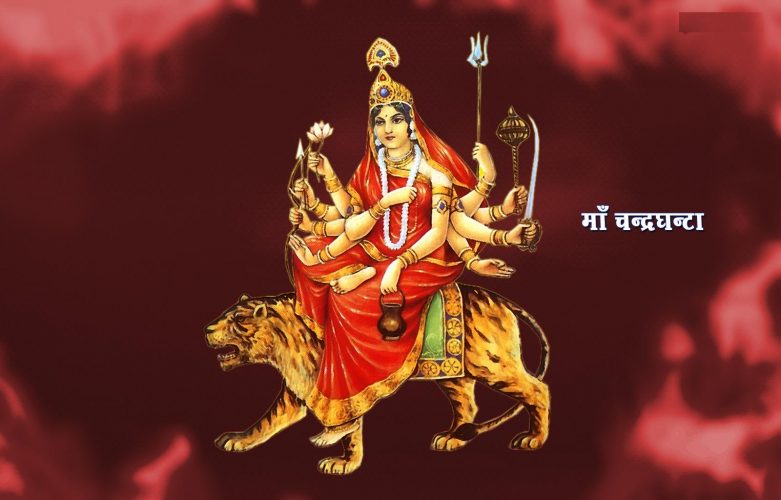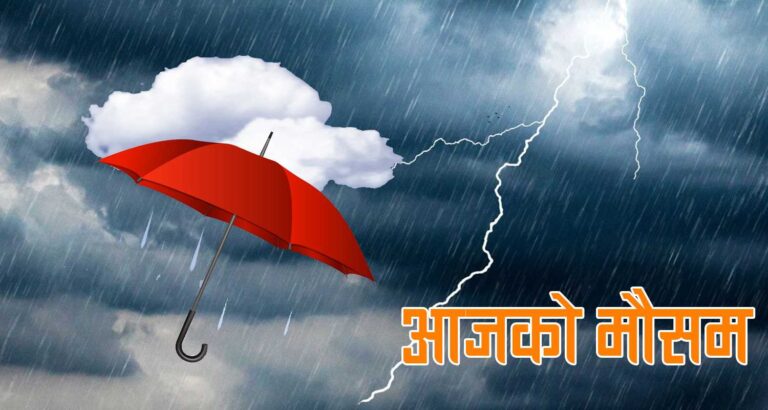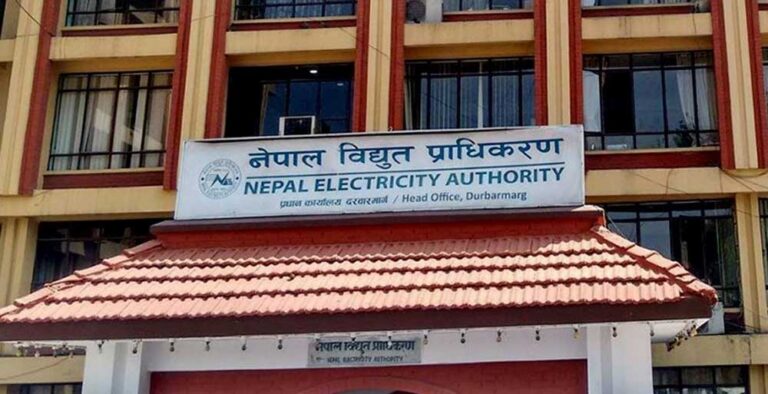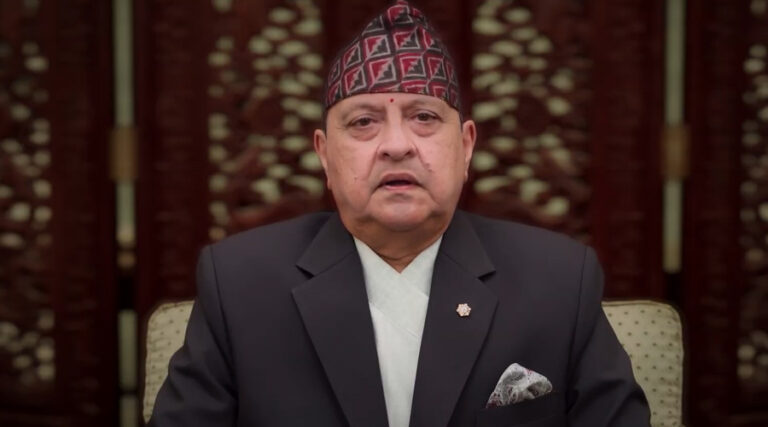
On the third day of Bada Dashain and Navaratri, devotees across Nepal are performing special rituals to worship Goddess Chandraghanta, the third among the nine forms of Goddess Durga, in Dashain Ghars (sacred Dashain rooms) and prayer spaces.
According to ancient scriptures and Puranas, the name Chandraghanta comes from the crescent moon (Chandra) that adorns the bell (Ghanta) on her hand. Scholars explain that worshipping this goddess grants spiritual strength and destroys negative forces. Toyaraj Nepal, former professor of religious studies at Nepal Sanskrit University, notes that Navaratri is considered an auspicious time for her special veneration.
The Markandeya Purana mentions, “Chandrah Ghantayam Yasya Sa”—meaning the goddess whose bell bears the moon is called Chandraghanta. She is depicted with a half-moon on her forehead and a bell in hand, her complexion golden yellow. It is believed that she annihilates demonic forces and grants divine power. On this day, devotees meditate on the Manipura Chakra to receive strength and blessings.
Associate Professor Chintamani Bhattarai of Valmiki Vidyapeeth explains that the grace of Goddess Chandraghanta is said to destroy sins and bring inner peace. Her demeanor is calm, compassionate, and benevolent. Those engaged in music and the arts especially worship her for inspiration and brilliance, believing that meditating on her form enhances the glow of one’s aura.
Navaratri began on Monday with Ghatasthapana, the ritual planting of barley seeds (Jamara) and invocation of Goddess Shailaputri, the first of the nine forms of Durga. On Tuesday, devotees worshipped Brahmacharini, the second goddess. Today, the third day, is dedicated to Chandraghanta with devotion and meditation.
Throughout the nine days of Navaratri, sacred texts such as Durga Saptashati (Chandi) and Shrimad Devi Bhagavat are recited daily at Dashain Ghars and Shakti Peeths. It is believed that worship during this period brings strength, prosperity, and wisdom. Temples and shrines across Nepal are crowded with devotees, especially on Wednesdays, Thursdays, Fridays, and Saturdays, when special prayers to the goddess are performed.



